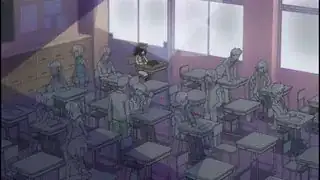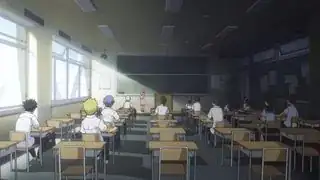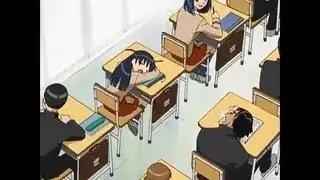This answer was based on a valid criticism of the question in the answer by coleopterist. It does not seek to answer any of the questions posed in the OP, which in my opinion are already satisfactorily answered in several of the other answers, and should ideally be viewed as an extended comment on that answer.
The following are preliminary statistics, based solely on the anime I currently have access to. There is much to criticize, but I believe it is good enough for now. I intend to do a more detailed study of this in the future; please see the Future Work section below.
Description
The goal of this study is to gather statistics to attempt to confirm or invalidate the proposition that anime protagonists disproportionately sit near windows in classrooms. It was also found interesting to consider how far back in the room these characters sat.
In what follows, the term "column" will be used for a line of desks parallel to the window, and "row" will be used to mention lines of desks perpendicular to the window.
Methodology
Play the first episode of all anime currently available in which the protagonist is a student. There were no cases where the protagonist was not obvious. Attempt to locate the protagonist's seat by playing through the video at 8x normal speed, pausing when necessary. If the protagonist's seat can be located, note it, otherwise mark it as undetermined. In order to save time, multiple videos were played concurrently in many cases.
Data Set
The 34 anime series I currently have access to in which the protagonist is a student at or below high-school level. This is by no means a representative sample, given that they are disproportionately recent anime. A fairer method will be used in future studies.
Results
Of the 34 anime included, in 18 cases the protagonist's seat could not be determined. In the remaining 16 cases, 7 were next to a window, and 6 of those 7 were in the back two seats of that column. Of the remaining 9, 3 were in the back two seats in some column other than the column closest to the window. 4 were in the front row, and 2 were somewhere else (in one of these cases the classroom had no windows). In most cases, there were 5 or more seats per column, and at least 4 columns. It was not uncommon for one or more other significant characters to be seated in the immediate vicinity of the protagonist, and the reason that the back two seats were counted rather than just the back one was specifically for the cases where another character is sitting directly behind the protagonist.
Conclusions
It appears that both being near the window and being towards the back of the classroom are both disproportionately common based on this limited sample. These accounted for, respectively, 7/16 (43.8%) and 9/16 (56.3%), while the expected rate for both of these for random data would be well below 50%, especially in the former case. The results are not very significant statistically, suggesting that more data is in order.
Future Work
There are issues with the methodology which merit further work. In particular, the sample is by no means representative. It is prone to my own biases, which aren't easily measurable, so a more controlled experiment is needed. Rather than a self-selected sample, a better to choose a representative sample in some way which is less biased. Possible options include looking at a list of most popular anime or all recent TV anime. Either of these is expected to increase the amount of time required. The various merits and issues with each of these options will be weighed.
Another issue is that the first episode may not be sufficient. It would be good to go through enough of each anime to be sure that the correct seat is chosen, though this may prove difficult. Whatever method is used, it must be unbiased to avoid confirmation bias. This is expected to increase the time required for future studies.
A third issue is that the sample sizes are insufficient for detailed study, or even to make any real conclusions extending beyond the sample itself. In some sense this is a fundamental issue, as it will always be time consuming to locate the seat of any character in anime. Even a sample size of 34 took a significant amount of time, and the modifications in the above paragraphs are likely to increase that significantly. A sample size of 100 seems like the largest practically feasible number. The considerations of this paragraph and the above two will need to be balanced against the time of the study, which is expected to be significant (indeed, even this preliminary study proved more time-consuming than I would have liked).
While the primary goal of future studies should be establishing to a higher degree of accuracy whether this effect is truly present (and if so how large of an effect it is), there are other interesting things to look at in the long term. A few are presented here:
Correlations between the seat choice and the genre would be interesting to look at, but are likely to require significantly more statistics than are feasible. This is mentioned as a possible long-term project, but it's unlikely to be completed. The more pressing goal. In addition, it would be interesting to do a similar study for other media, but this is likely to be less trivial as most other media are less uniform in presentation than anime. Finally, a historical survey, studying how common this was in different periods, would be very interesting but is probably too ambitious.
tl;dr: Yes, this does seem to be a real thing, at least preliminarily. It's certainly not always the case, but it happens frequently enough to be interesting. However, the data I have aren't good enough to make any solid conclusions beyond "yes, this happens more often than one would expect". More data will be needed to determine to what degree this is due to biases and statistical variation in the sample, and to what degree this actually happens.



